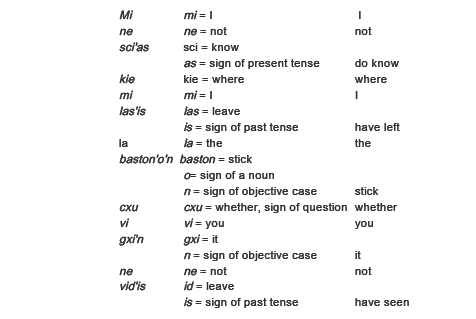works sited
"A DESIRE TO LEARN ESPERANTO:
HAVING A THING to do with Esperanto, Ballantine Beer, both or neither"
Nancy Lupo
August 30 - September 30, 2010
1. Merriam-Webster defines a rebus as, "a representation of words or syllables by pictures of objects or by symbols whose names resemble the intended words or syllables in sounds." Rebus puzzles are like visual puns in that the pictures are divorced from their meaning. For example, a picture of a knot can stand for the word "Not." Accordingly, a sequence of pictures of a knot + the letters 'TH' + a bottle of ink + the letters 'ING' along with the letters 'STR' + a picture of an eight of diamonds means, "Not thinking straight."
2. Underneath the caps of Ballantine XXX Ale you can find rebus puzzles or so-called "crown ticklers".
3. Ballantine XXX Ale is sold in transparent green, long neck, glass beer bottles or ISB (Industry Standard Bottles). Most likely, the glass was tinted green by adding Chromium or Iron to the molten glass during production. The green tint helps to protect the contents of the bottle from breaking down in sunlight.
4. In California, the cash redemption value (CRV) for glass bottles under 24 ounces, regardless of the color, is 5 cents.
5. The original, first edition of Montagu C. Butler's Esperanto-English Dictionary was bound in green linen with gold embossed lettering. At the BEHR paint store, the closest color match to the green linen on the book's cover is a shade named, Mermaid Song.
6. Among other books in or about Esperanto, Central Library holds a copy of Butler's Esperanto-English Dictionary (408.923 B986). The library's copy has a standard industrial library binding that is beige buckram coated with acrylic. The acrylic coating is generally resistant to water, mold, insects, and UV light.
7. Esperanto is an artificial language that was invented in the late 1800's by Dr. Ludovic Zamenhof, an ophthalmologist by trade. Some Esperantists have proposed that the language can be used as a kind of code in situations where two people wish to communicate but do not speak each other's language and have also never learned Esperanto.
8. Imagine that you are on a train car sitting next to a Russian gentleman with whom you wish to speak. You have brought with you a key to Esperanto in Russian. On the back of the key is written (in Russian), "Everything written in Esperanto can be translated by the help of this vocabulary. You give the gentleman a sentence written in Esperanto, and he will be able to make out your sentence in a very short time by using the key. As an example Dr. Zamenhof gives the following sentence: Mi ne sci'as kie mi las'is la baston'o'n: Cxu vi gxi'n ne vid'is? With the vocabulary this sentence works out as follows:






